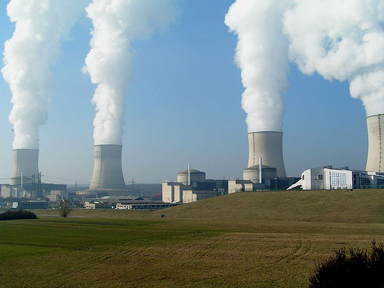Titled, “Renaissance in Reverse”, subtitled: Competition pushes aging USA nuclear reactors to the brink of economic abandonment, Mark Cooper, Senior Fellow for Economic Analysis, Institute for Energy and the Environment, Vermont Law School, released his report July 18, 2013.
In his executive summary, Mark Cooper says: “Although Wall Street analysts expressed concerns about the economic viability of the aging nuclear fleet in the U.S., the recent early retirements of four nuclear reactors has sent a shock wave through the industry. One purely economic retirement (Kewaunee, 1 reactor) and three based on the excessive cost of repairs (Crystal River,
1 reactor, and San Onofre, 2 reactors), in addition to the cancellation of five large uprates(Prairie Island, 1 reactor, LaSalle, 2 reactors, and Limerick, 2 rectors), four by the nation’s large nuclear utility, suggest a broad range of operational and economic problems.
“These early retirements and decisions to forego uprates magnify the importance of the fact that the “nuclear renaissance” has failed to produce a new fleet of reactors in the U.S. With little chance that the cost of new reactors will become competitive with low carbon alternatives in the time frame relevant for old reactor retirement decisions, a great deal of attention will shift to the economics of keeping old reactors online, increasing their capacity and/or extending their lives.
The purpose of the paper is not to predict which reactors will be the next to retire, but explain why we should expect more early retirements. It does so by offering a systematic framework for evaluating the factors that place reactors at risk of early retirement.
The full report:
http://assets.fiercemarkets.com/public/sites/energy/reports/071713atriskreactorreportFINAL1.pdf
Mark Cooper’s conclusion:
“Nuclear economics have always been marginal at best. The first cohort of commercial reactors was much more costly than the available alternatives, but those reactors were forced online by a regulatory system that did not have a market to look to, or care to do so even if one existed. It can be argued that the locomotive that pulled half the nation toward restructuring and much greater reliance on market signals was the reaction against the excessive costs of nuclear power. Some advocates of restructuring loudly declared restructuring would prevent another nuclear fiasco.
“Ironically, it appears that an unintended consequence of the shift toward markets will be to force the early retirement of the very reactors that a market never would have allowed to be built in the first place. While half the country does not rely on markets to set the price of electricity, the presence of markets across the country sends strong signals to regulators that keeping aging reactors online, especially if they need repairs or retrofits, does not make economic sense. Thus, although the outcome is ironic in the long sweep of nuclear history in the U.S. it is perfectly consistent with the fundamental economics of nuclear power throughout that history.
“While the purpose of the Wall Street analysis is to advise and caution investors about utilities that own the aging fleet of at-risk reactors, my purpose is to inform policymakers about and prepare them for the likelihood of early retirements. By explaining the economic causes of early retirements, the policymakers will be better equipped to make economically rational responses to those retirements (or the threat of retirement).
“Economic reality has slammed the door on nuclear power:
• In the near-term old reactors are uneconomic because lower cost alternatives have squeezed their cash margins to the point where they no longer cover the cost of nuclear operation.
• In the mid-term, things get worse because the older reactors get, the less viable they become.
• In the long term new reactors are uneconomic because there are numerous low-carbon alternatives that are less costly and less risk.
“The lesson for policy makers in the economics of old reactors is clear and it reinforces the lesson of the past decade in the economics of building new reactors. Nuclear reactors are simply not competitive. They have never been competitive at the beginning of their life cycle, when the build/cancel decision is made, and they are not competitive at the end of their life cycles, when the repair/retire decision is made. They are not competitive because the U.S. has the technical ability and a rich, diverse resource base to meet the need for electricity with lower cost, less risky alternatives. Policy efforts to resist fundamental economic reality of nuclear power will be costly, ineffective and counterproductive.”
For a summary see:
“Nuclear sending shock waves through Wall Street”, by By Barbara Vergetis Lundin , Fierce Energy, August 7, 2013










